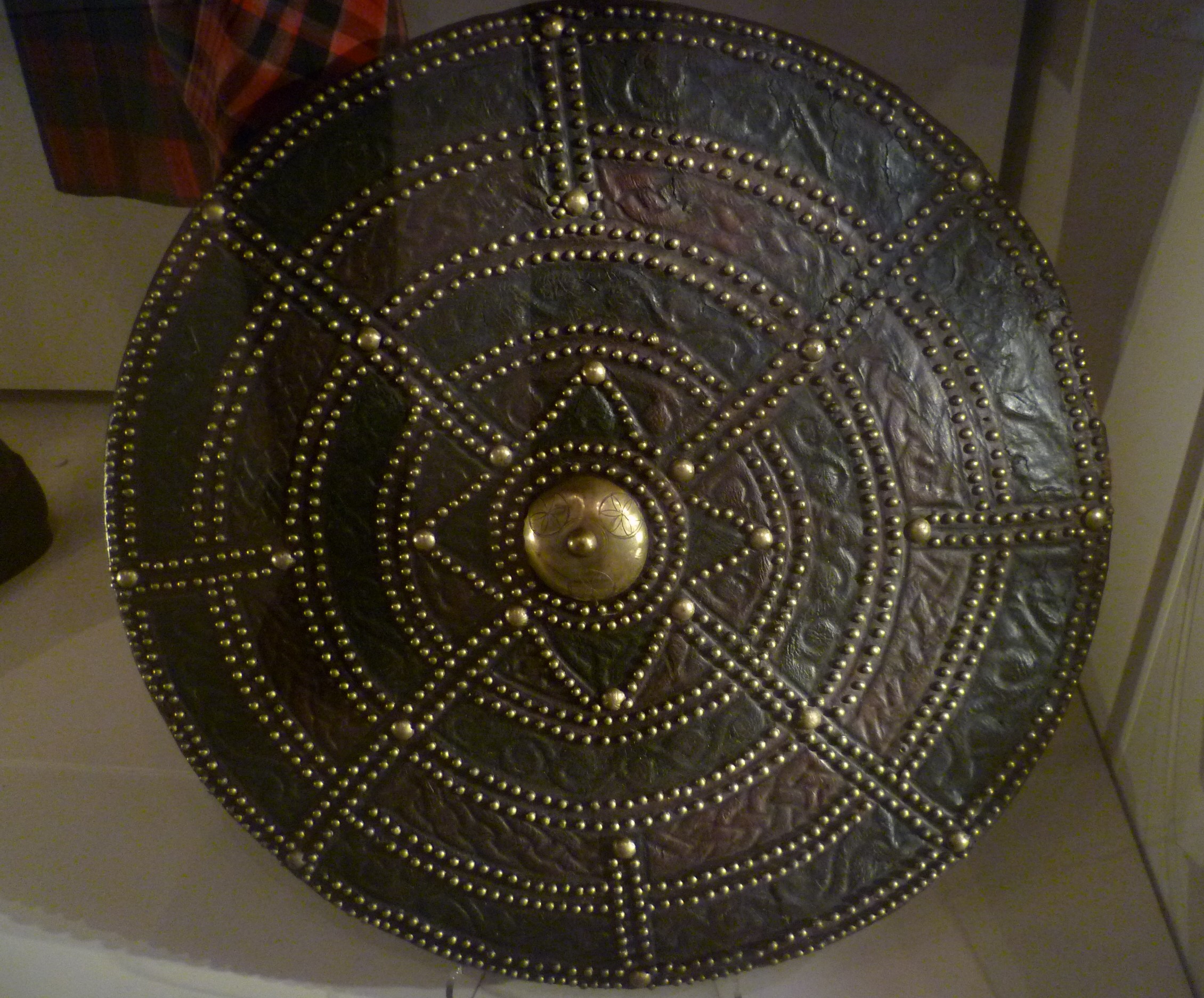Targe on:
[Wikipedia]
[Google]
[Amazon]
 The targe is a type of strapped round shield that was used by Scottish Highlanders in the early modern period. From the late 16th century, until the
The targe is a type of strapped round shield that was used by Scottish Highlanders in the early modern period. From the late 16th century, until the
Highland targes of the seventeenth and eighteenth centuries
log-in required Medieval shields Military of Scotland Weapons of Scotland
 The targe is a type of strapped round shield that was used by Scottish Highlanders in the early modern period. From the late 16th century, until the
The targe is a type of strapped round shield that was used by Scottish Highlanders in the early modern period. From the late 16th century, until the Battle of Culloden
The Battle of Culloden took place on 16 April 1746, near Inverness in the Scottish Highlands. A Jacobite army under Charles Edward Stuart was decisively defeated by a British government force commanded by the Duke of Cumberland, thereby endi ...
in 1746, the Scottish Highlander's main means of defence in battle was his targe. In February 1596, the clan leader John Grant of Freuchie was able to muster 500 men, including 40 armed "according to the Highland custom" with bows, helmets, swords, and targes. After the disastrous defeat of the Jacobites at Culloden, the carrying of the targe had been banned by the Disarming Act, and many were destroyed or put to other uses. Those that remain have intricate patterns and are decorated, indicating that they would have originally belonged to important people.
The targe is a concave shield fitted with enarmes on the inside, one adjustable by a buckle, to be attached to the forearm, and the other fixed as a grip for the left hand.
Etymology
''Targe'' (, ) was a general word for ashield
A shield is a piece of personal armour held in the hand, which may or may not be strapped to the wrist or forearm. Shields are used to intercept specific attacks, whether from close-ranged weaponry like spears or long ranged projectiles suc ...
in late Old English. Its diminutive, ''target'', came to mean an object to be aimed at in the 18th century.
The term refers to various types of shields used by infantry troops from the 13th to 16th centuries, or earlier. From the 15th century, the term could also refer to special shields used for jousting
Jousting is a medieval and renaissance martial game or hastilude between two combatants either on horse or on foot. The joust became an iconic characteristic of the knight in Romantic medievalism.
The term is derived from Old French , ultim ...
. A fair number were created wholly for show.
Structure of the Scottish targe
Targes are generally round shields between 18 in and 21 in (45–55 cm) in diameter. The inside of the targe was formed from two very thin layers of flat wooden boards, with thegrain
A grain is a small, hard, dry fruit (caryopsis) – with or without an attached husk, hull layer – harvested for human or animal consumption. A grain crop is a grain-producing plant. The two main types of commercial grain crops are cereals and ...
of each layer at right angles to the other. They were fixed together with small wooden pegs, forming plywood
Plywood is a composite material manufactured from thin layers, or "plies", of wood veneer that have been stacked and glued together. It is an engineered wood from the family of manufactured boards, which include plywood, medium-density fibreboa ...
. The front was covered with a tough cowhide, which was often decorated with embossed Celtic style patterns. This was fixed to the wood with many brass, or in some cases, silver, nails, and occasionally brass plates were also fixed to the face for strength and decoration. Targes generally had center bosses of brass. A Highlander was usually armed with a broadsword or dagger in one hand and targe on his other arm for close combat. It was also common for a dirk to be held in the targe hand, with the blade extending below the targe.
The back of the targe was commonly covered in deerskin, and a very few had some packing of straw etc. behind this. Although all the old targes show signs of handles and arm straps, of various designs including centre-grips, there is very little evidence to indicate that there was any guige strap for carrying the targe over the shoulder.
See also
* BucklerReferences
External links
* {{Commonscat inlineHighland targes of the seventeenth and eighteenth centuries
log-in required Medieval shields Military of Scotland Weapons of Scotland